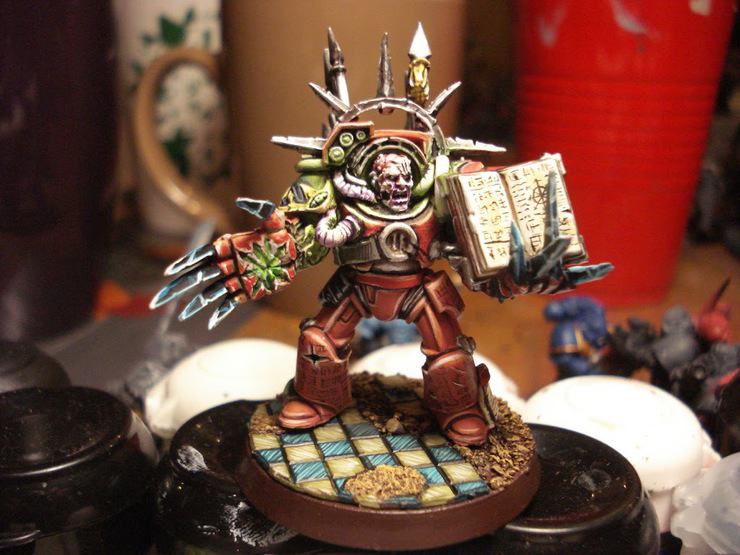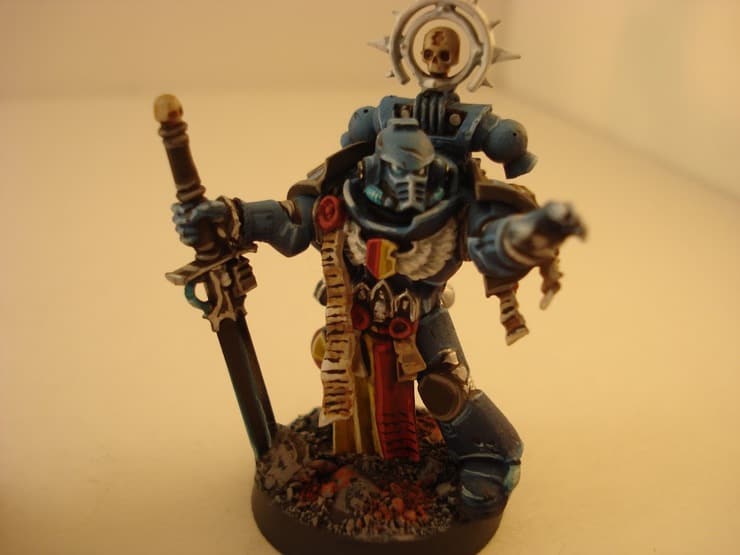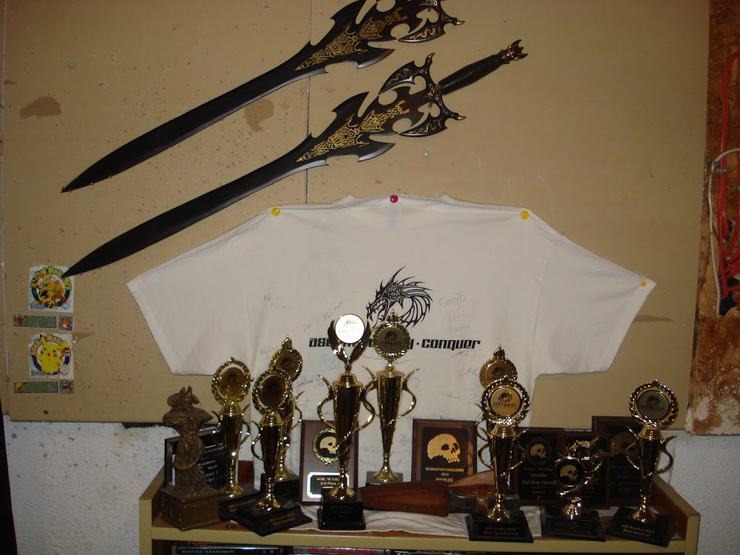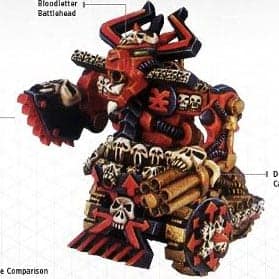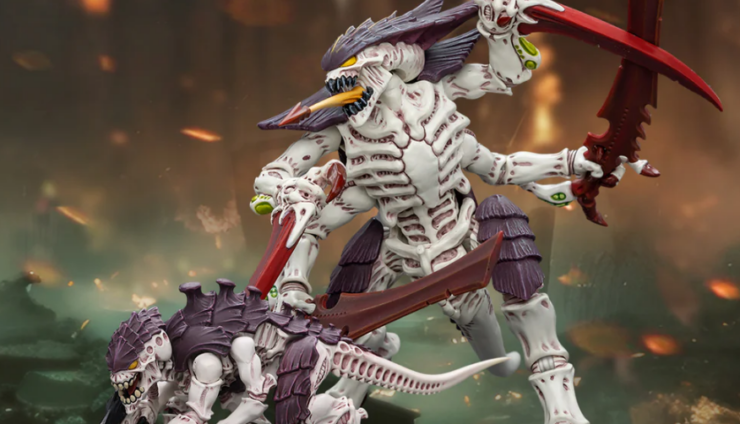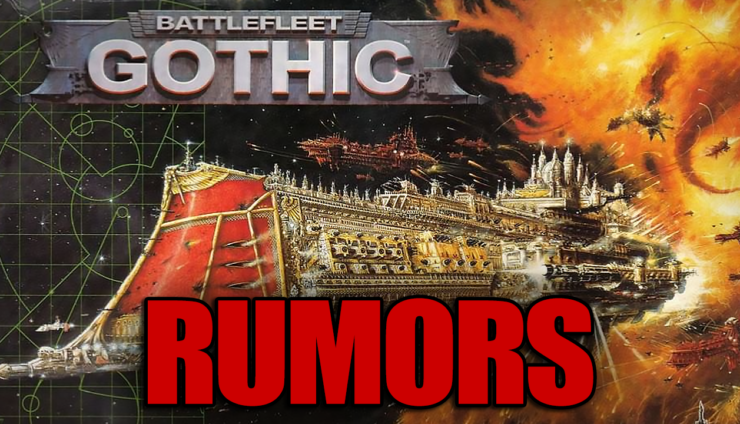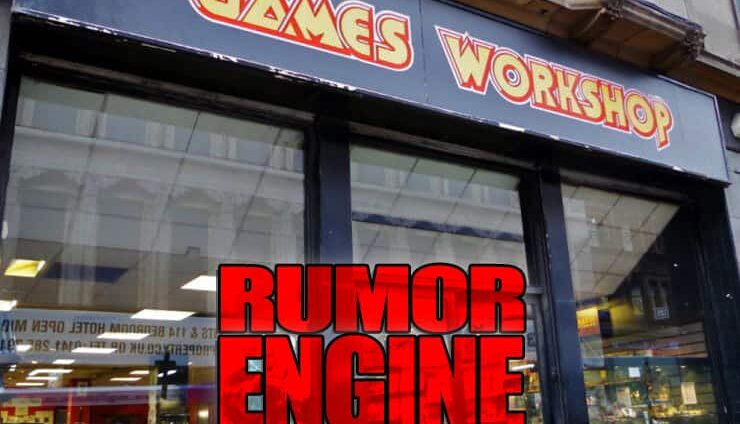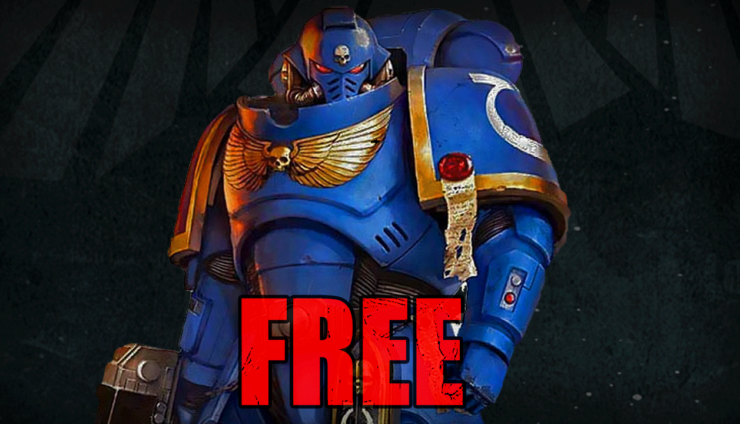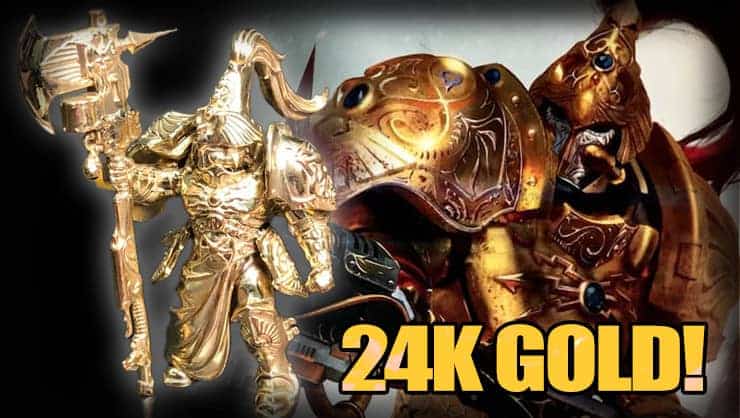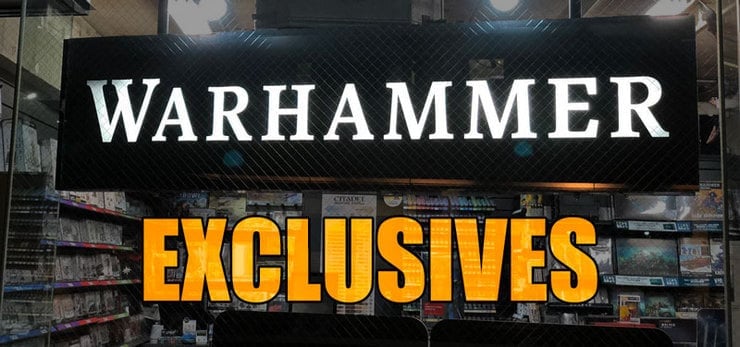 Hey guys, Rage of Khorne here from The Order of Chaos and today I’d like to talk about the fundamentals of winning games of Warhammer 40k at tournaments.
Hey guys, Rage of Khorne here from The Order of Chaos and today I’d like to talk about the fundamentals of winning games of Warhammer 40k at tournaments.
If you don’t attend tournaments or never plan on attending them, this article might not be for you as I’m simply analyzing army lists based on their performance from a score sheet perspective.
I do play for story, variety, and just plainly to paint some cool models but that stuff I reserve for campaigns and friendly pick-up games.
I’ve been playing 40k for a little over 15 years now and in the past 5 years my gaming group and I have attended the largest standard tournaments in our area (Southern Ontario, Canada): Warmasters 40k Challenge and Conquest Toronto.
I’ve gathered a few basic ideas I use when determining my tournament capable army lists (for standard 40k). This article is not about the strategies I use, but rather a process of elimination on what works in a tournament list. I use 5 criteria to decide what to take, and you’d be surprised how well it works if you apply it to an army list you use (good or bad).
I’ve gathered a few basic ideas I use when determining my tournament capable army lists (for standard 40k). This article is not about the strategies I use, but rather a process of elimination on what works in a tournament list. I use 5 criteria to decide what to take, and you’d be surprised how well it works if you apply it to an army list you use (good or bad).
5 Criteria for Judging Tournament Worthiness
Value
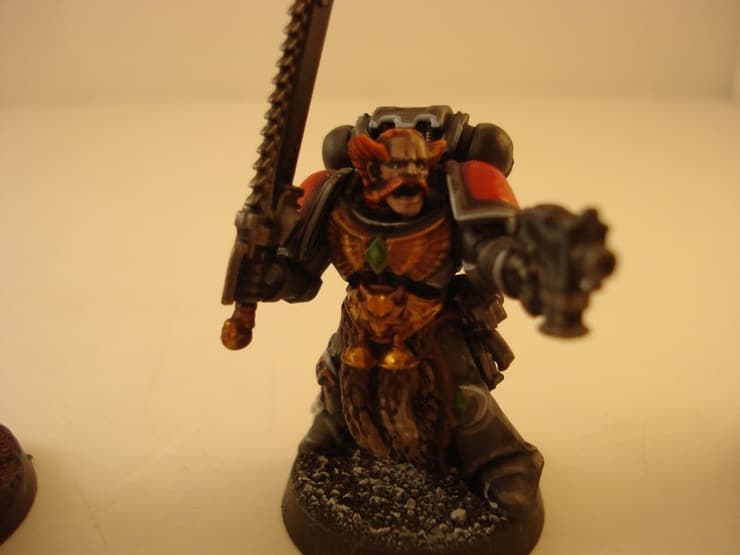 |
| Space Wolf Grey Hunter |
Value is the generals’ perceived worth of a unit in relation to what they’re willing to spend on it. The value of a unit, upgrade, or ability is the perceived worth to the general in what he is willing to spend in points. Determining perceived value is one of the hardest parts of building a successful army list; this is because there are so many variables to consider: statistics, armour, war gear, special rules, morale, etc. To help me determine value I simply take what I think is the best unit of a similar type in the game at that point in time and match it up against the unit I’m testing. For example, I believe Space Wolf Grey Hunters are one of the best (or the best); at 15 points a model, you get Frag/Krak Grenades, Close Combat Weapon, Bolter, Bolt Pistol, And They Shall Know No Fear, and Counter Attack – few other units can compare to how well rounded this unit is.
A common balanced unit is:
9x Grey Hunters
Equip: Meltagun , Wolf Standard
Wolf Guard
Equip: Power Fist, Combi-Melta
Transport: Rhino or Drop Pod
Total: 228 Points
Use this as the comparison unit, take an infantry unit in your army (troop choice or not) and match it up against the Grey Hunters point for point. I’ll take 14 Necron Immortals as an example and match it up against the Grey Hunters using some basic characteristics as criteria (I’m aware the unit can’t be that large so for arguments sake let’s say two units of 7).
Survivability – The Necron Immortals have the better survivability with their similar toughness, saving throw, larger number and reanimation protocols.
Damage Output – Their damage output is dependent on the weapons they take but it is generally better than that of the Grey Hunters. They can harm vehicles with their Gauss weapons which is a nice bonus for the Immortals but when it comes to outright destroying tanks the Meltas of the Space Wolves are more effective.
Combat Ability – The Immortals have a fairly strong stat line for combat against most opponents, but against the Wolves they will lose the fight almost every time. Against vehicles the Wolves also have more than one option for cracking open armour where the Immortals do not – a Power Fist on the Wolf Guard and Krak grenades on all the Hunters.
Both groups have comparable pros and cons and so would be considered high value units. An example of a low value unit would be something like Possessed Chaos Space Marines. If you compare them on the basis of their basic stats and abilities for their cost in points you can see how little value you really get from them. They are expensive, are not troops and can’t shoot. A judgement I like to use when play testing a unit for tournament games is whether the unit kills its points cost of enemy models or not. If it can eliminate its point cost in enemy units, it is effective, if it can regularly destroy more than its points cost, it is highly effective.
Flexibility
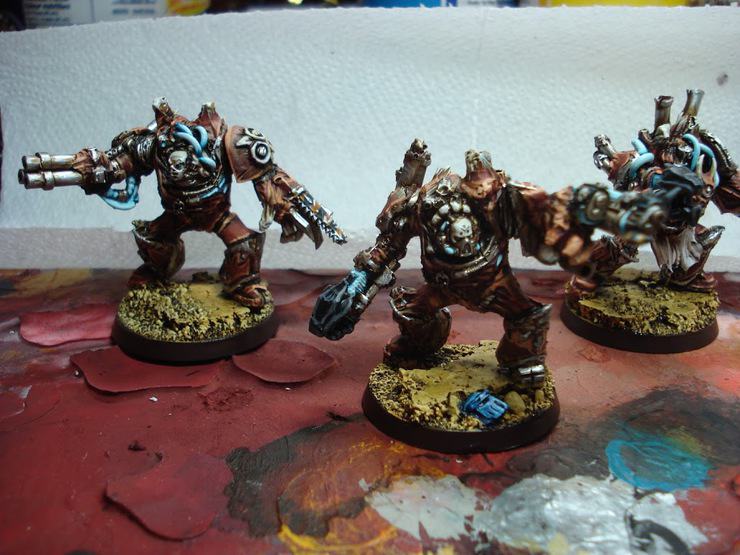 |
| Chaos Obliterators |
This is a comparison of how autonomously the unit can function without support from characters or other units. You can tell a unit is flexible if it can kill any type of unit type (tank, infantry, flyer, etc.) in the game or respond to any threats you might see on the battlefield. I would say the unit of Space Wolves from the previous section is an example of a particularly flexible unit due to the fact it can fight, shoot, kill tanks, and will generally do what you want it to. Flexible units are hard to counter and have added value beyond simply what you’re paying the points for.
The most commonly ignored factor when talking about tournament compatibility is the cool factor! How awesome your stuff looks can account for between 20%-and 50% of your tournament score, which can make the difference between taking the top prize and being left middle of the pack. We are part of a unique hobby which has managed to integrate both artistic concerns and a rich gaming system. When attending a tournament, it’s important to remember to cover all your bases. If two different units can perform a similar task for a similar price, I often take the prettier of the two to optimize painting score opportunities (and paint some awesome looking miniatures). Modification and Conversion of your figures gives you the opportunity to keep the best tactical options open whilst making your army attractive to the judges.
There is a quality that most tournament players know about but rarely consciously acknowledge and that is target acquisition. What I mean by this is the ability of a unit, tank or infantry, to reach out and touch anything on the battlefield. This is not simply limited to the range of weapons or the speed of a unit however, and includes the ability of said unit to actually kill what it’s shooting at. An example of a unit with a strong ability to acquire and kill a specific target would be a unit of Chaos Marines armed with Lascannons firing at a tank. They have the reliability, strength, and range to pick on and kill most vehicles fairly quickly. Another example would be Hydra Flak tanks firing on flyers or Grey Knight Terminator units with psybolt ammo shooting at Marines.
The idea of cohesion could be best described by assessing how well a unit “plays well with others”.
· Is the unit integral to the function of your army (eg: Synapse)?
· Does this unit buff others around it (eg: Blood Chalice)?
· Does the unit provide morale boosting abilities (eg: Chapter Banners)?
· Does a certain character modify your Force Organisation (eg: Kaldor Draigo)?
These are all things to keep in mind when calculating whether a unit “fits” in your army and can turn a seemingly weak list into something seriously formidable on the tabletop. There are army lists that’s depend entirely on this factor so it’s one that’s hard to ignore when building for competition army lists and it’s the most important factor to keep in mind when positioning your army on the field. If you pay points for a model that provides Feel No Pain in a 6” bubble, it doesn’t help you to field him on foot if your army is made up of jump infantry or deep striking units. You’re forward units will quickly out stride your support elements and render your purchase worthless.
Closing Thoughts
I generally practice what I preach so here is an example of a list that did rather well in tournament games. It is what some people might call a “spamming” list but it functions because of the flexibility of each of the units in it.
|
HQ
|
Rune Priest 1
|
|
|
Terminator Armour
|
||
|
Living Lightning
|
||
|
Jaws of the World Wolf
|
||
|
HQ
|
Rune Priest 2
|
|
|
Terminator Armour
|
||
|
Combi-Melta
|
||
|
Jaws of the World Wolf
|
||
|
Murderous Hurricane
|
||
|
Elites
|
5 Wolf Guard
|
|
|
1x Terminator Armour
|
||
|
1 Combi-Melta
|
||
|
1 Chain Fist
|
||
|
1 Heavy Flamer
|
||
|
Troops
|
10 Grey Hunters
|
|
|
Drop Pod
|
||
|
Melta x2
|
||
|
Wolf Banner
|
||
|
Troops
|
10 Grey Hunters
|
|
|
Drop Pod
|
||
|
Melta x2
|
||
|
Wolf Banner
|
||
|
Troops
|
10 Grey Hunters
|
|
|
Drop Pod
|
||
|
Plasma x2
|
||
|
Wolf Banner
|
||
|
Power Axe
|
||
|
Troops
|
7 Grey Hunters
|
|
|
Wolf Banner
|
||
|
Drop Pod
|
||
|
Power Axe
|
||
|
Melta
|
||
|
Wolf Guard w/ Combi Melta and Rune Priest Attached
|
||
|
Troops
|
8 Grey Hunters
|
|
|
Drop Pod
|
||
|
Wolf Banner
|
||
|
Flamer
|
||
|
Wolf Guard in Terminator Armour Attached
|
||
|
Heavy
|
6 Long Fangs
|
|
|
5 Missiles
|
||
|
Wolf Guard Attached
|
||
|
Heavy
|
6 Long Fangs
|
|
|
5 Missiles
|
||
|
Wolf Guard Attached
|
||
|
Heavy
|
6 Long Fangs
|
|
|
3 Missiles
|
||
|
2 Lascannons
|
||
|
Wolf Guard and Rune Priest 1 Attached
|
||
|
Fortification
|
Aegis Line
|
|
|
Quad Cannon
|
Total – 1849
This next army functions well for a very different reason; it has less flexible units but each one either has a strong amount of target acquisition, value, or cohesion. This is what most people would call a “balanced” list. It has at least one unit for everything; fighting, shooting, living, anti-air, anti-tank, and capturing.
|
HQ
|
Chaos Lord
|
|
|
Mark of Khorne
|
||
|
Juggernaught
|
||
|
Axe of Blind Fury
|
||
|
Sigil of Chaos
|
||
|
Veterans of the Long War
|
||
|
Troops
|
18 Marines
|
|
|
2x Melta
|
||
|
Veterans of the Long War
|
||
|
Troops
|
10 Cultists
|
|
|
Stubbers
|
||
|
Heavy Stubber
|
||
|
Heavy
|
3 Obliterators
|
|
|
Veterans of the Long War
|
||
|
Mark of Nurgle
|
||
|
Heavy
|
7 Havoks
|
|
|
4 Lascannons
|
||
|
Veterans of the Long War
|
||
|
Heavy
|
7 Havoks
|
|
|
4 Missiles
|
||
|
Veterans of the Long War
|
||
|
Fast
|
5 Spawn
|
|
|
Mark of Nurgle
|
||
|
Fast
|
Heldrake
|
|
|
Baleflamer
|
||
|
Fortification
|
Aegis Line
|
|
|
Quad Cannon
|
||
|
Allied HQ
|
Imperial Guard Command Squad
|
|
|
Auto Cannon
|
||
|
Troops
|
10 Veterans
|
|
|
Auto Cannon
|
||
|
Fast
|
Vendetta
|
|
|
Heavy Bolter
|
Thanks for reading and stay tuned for more gaming and painting articles from The Order of Chaos.
